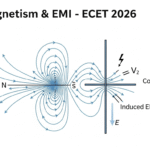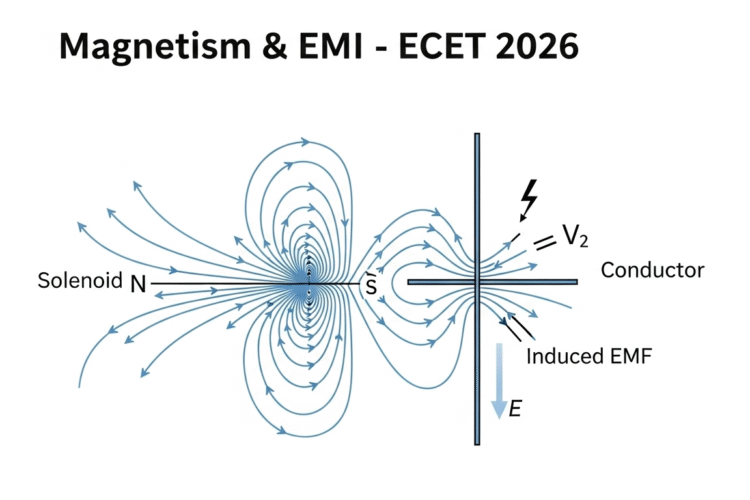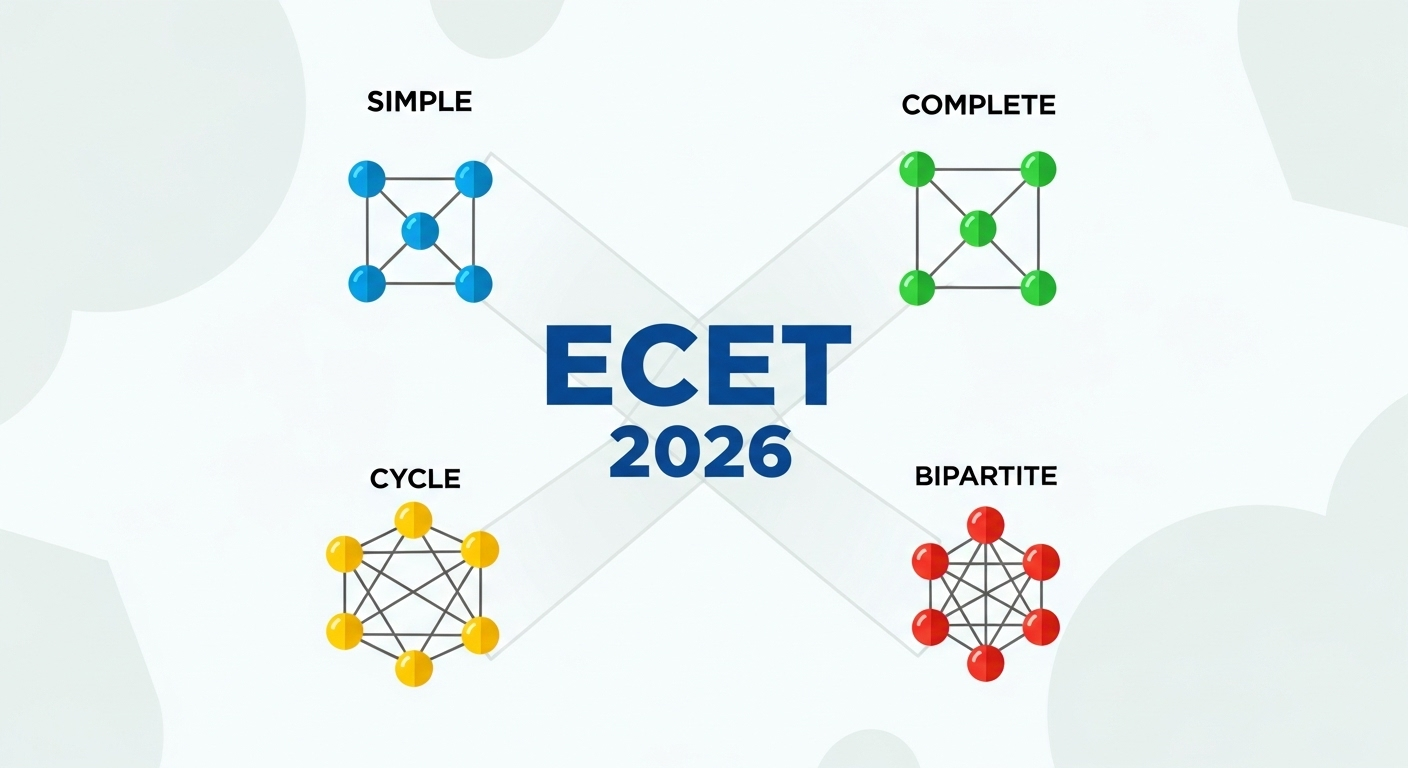
For all ECET 2026 diploma students, Matrices and Determinants is a must-score chapter. One of the most repeated questions in Engineering Mathematics is the Inverse of a Matrix using the Gauss-Jordan method. In this post, we will learn the concept step-by-step with an easy example, followed by 10 MCQs, answer key, and full explanations to help you score full marks in this chapter.
📘 Concept Notes – Gauss-Jordan Method for Matrix Inverse
🧾 What is Matrix Inverse?
If A is a square matrix, its inverse is a matrix A⁻¹ such that:
A × A⁻¹ = I, where I is the identity matrix.
👉 Only non-singular matrices (whose determinant ≠ 0) have an inverse.
🔁 Gauss-Jordan Method – Step-by-Step
The Gauss-Jordan method is a row-reduction technique to find the inverse without using determinant or adjoint.
✅ Steps:
- Write the Augmented Matrix: [A | I]
- Apply Row Operations to convert the left side (A) to the identity matrix.
- Once done, the right side becomes the inverse of A (A⁻¹).
🧠 Example: Find A⁻¹ using Gauss-Jordan Method
Let
Matrix A =
| 1 2 |
| 3 4 |
🔹 Step 1: Form Augmented Matrix [A | I]
| 1 2 | 1 0 |
| 3 4 | 0 1 |
🔹 Step 2: Apply Row Operations
- R2 → R2 – 3×R1
| 1 2 | 1 0 |
| 0 -2 | -3 1 |
R2 → R2 ÷ -2
| 1 2 | 1 0 |
| 0 1 | 1.5 -0.5 |
- R1 → R1 – 2×R2
| 1 0 | -2 1 |
| 0 1 | 1.5 -0.5 |
🔹 Step 3: Final Result
Now the left side is identity matrix, and the right side is the inverse.
✅ Therefore,
A⁻¹ =
| -2 1 |
| 1.5 -0.5 |
🔟 10 Most Expected MCQs – ECET 2026 [Matrix Inverse – Gauss-Jordan]
Q1. What type of matrix must be used to find an inverse?
A) Rectangular
B) Square
C) Row matrix
D) Column matrix
Q2. What is the first step in the Gauss-Jordan method?
A) Find determinant
B) Multiply by inverse
C) Augment with identity matrix
D) Calculate adjoint
Q3. In the Gauss-Jordan method, what is the goal of row operations?
A) Diagonal matrix
B) Identity matrix
C) Zero matrix
D) Nullify RHS
Q4. Which operation is not allowed in Gauss-Jordan?
A) Swap rows
B) Add a multiple of one row to another
C) Multiply a row by non-zero constant
D) Multiply column by a scalar
Q5. If det(A) = 0, then:
A) A has inverse
B) A is singular
C) A⁻¹ = 0
D) A is diagonal
Q6. What is the order of the identity matrix used in A⁻¹ of 3×3 matrix?
A) 2×2
B) 1×1
C) 3×3
D) 4×4
Q7. Which matrix is used along with A in the augmented form?
A) A⁻¹
B) A itself
C) Identity matrix
D) Zero matrix
Q8. What is the result when A × A⁻¹ = ?
A) Zero matrix
B) A
C) A⁻¹
D) Identity matrix
Q9. Which method is used to find inverse without using determinant or adjoint?
A) Cramer’s Rule
B) Gauss-Jordan
C) Matrix addition
D) Row-column multiplication
Q10. Which of the following is a valid row operation?
A) Multiply a row by 0
B) Add column to a row
C) Subtract row from another row
D) Swap columns
✅ Answer Key Table
| Q.No | Answer |
|---|---|
| Q1 | B |
| Q2 | C |
| Q3 | B |
| Q4 | D |
| Q5 | B |
| Q6 | C |
| Q7 | C |
| Q8 | D |
| Q9 | B |
| Q10 | C |
🧠 Explanations of All Answers
- Q1 → B: Only square matrices can have an inverse.
- Q2 → C: You must augment the original matrix with identity to start.
- Q3 → B: The goal is to make the left side an identity matrix.
- Q4 → D: Only row operations are allowed, not column ones.
- Q5 → B: If determinant is 0, the matrix is singular and non-invertible.
- Q6 → C: For a 3×3 matrix, we use a 3×3 identity matrix.
- Q7 → C: Identity matrix is placed to the right in [A | I].
- Q8 → D: A × A⁻¹ always equals the identity matrix.
- Q9 → B: Gauss-Jordan method avoids determinant or adjoint.
- Q10 → C: Subtracting rows is a valid row operation.
🎯 Why This Practice Matters for ECET 2026
This topic is simple but highly scoring. In ECET, you’ll often get direct MCQs from Gauss-Jordan inverse method. Practicing step-by-step examples and objective questions will give you maximum confidence and speed in the exam.
📲 Join Our ECET Prep Community on Telegram
Get daily MCQs, chapter-wise PDFs, previous year questions, and video explainer sessions for ECET 2026 CSE.
👉 Join now: @LearnNewThingsHub



